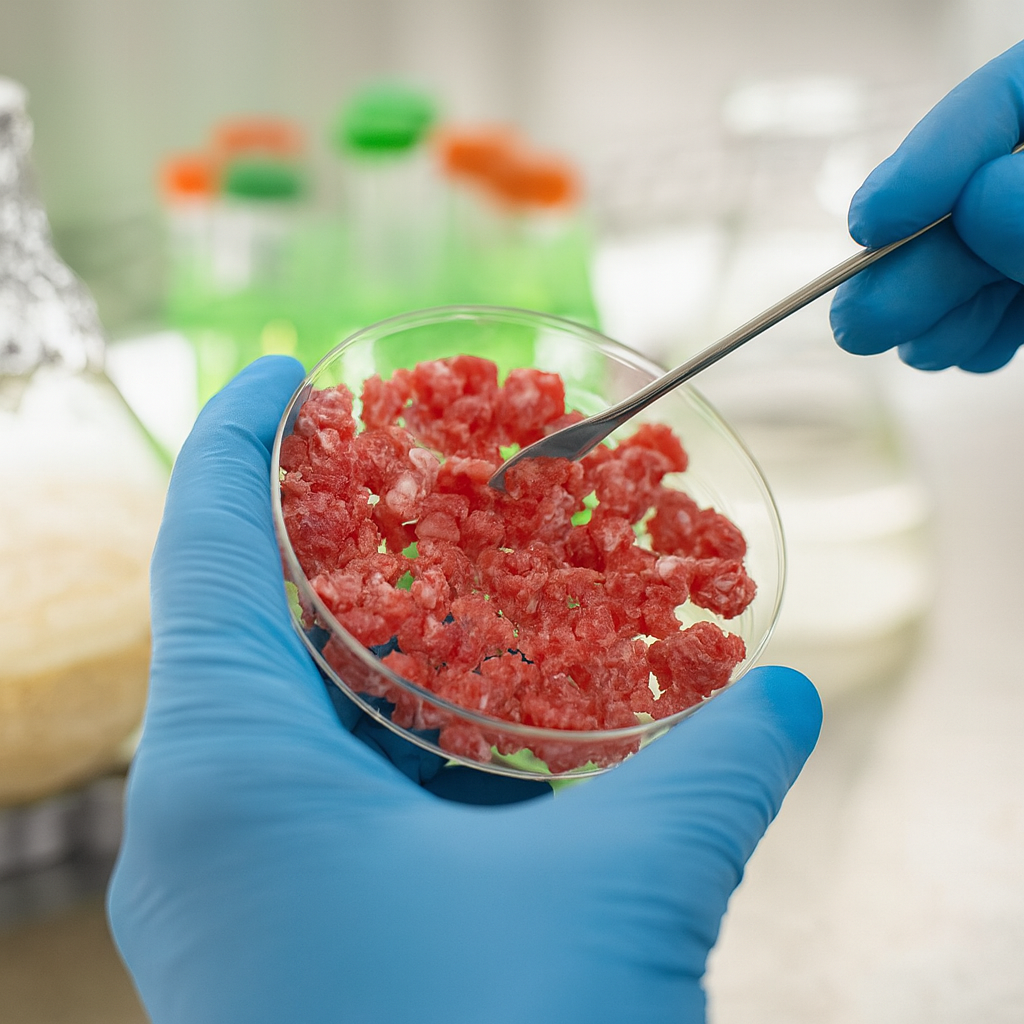
Blended meats a clear path forward?
Fable Food blends mushrooms with meat and dairy, delivering taste, health, and sustainable plant-forward options.
Mushrooms in your beef burgers. Chickpeas with your chicken. Oats and milk.
Is the surge in blended meats and hybrid dairy the bridge to shifting mainstream customers to buying more plant-based products?
“From what we’re seeing, the biggest opportunity is in blended proteins,” Michael Fox, CEO and co-founder of Fable Food Co., says on LinkedIn. Fable makes shiitake mushroom-based products.
The shiitake adds a rich umami flavour that makes the dish taste better than beef alone — it adds fiber, Vitamin D and iron, and the combination reduces saturated fat and cholesterol, Fox says.
That meets head-on all the current trends driving consumers today: great taste, a desire to eat healthier and minimally processed food.
Almost all consumers (98%) who buy plant-based meat also buy conventional versions, creating a built-in target market for blended products. There’s also a significant overlap in the dairy category, with half of U.S. dairy consumers reporting they also use plant-based alternatives (more women report they buy both.)
A July 2025 report by ADM notes that blended proteins are gaining traction, with consumers citing benefits such as improved health, environmental impact, dietary variety and balanced nutrition. ADM reports high interest in hybrids across generations, with products offering taste and nutritional benefits without consumers having to make any major dietary changes.
“Protein blends meet every rising consumer demand — protein and ingredient diversity, higher protein content, elevated taste and texture, sustainability concerns and affordability,” ADM says. “And they do so better than the current selections in the marketplace, namely, traditional meat or dairy or all-plant products.”
Data from ADM shows strong generational interest in blended and hybrid products, with millennials (75%) and Gen Z (72%) the most enthusiastic over Gen X (66%) and Baby Boomers (53%). Another UK online survey reinforces that younger, more educated consumers are the most receptive to these products.
In blind taste tests, people often prefer the hybrid products. In one set of tests done by the non-profit Nectar, some blended meats outperform 100-per-cent meat products: Perdue’s Chicken Plus nuggets, Duo’s beef & mushroom burger and Fable’s shiitake-infused burger. 50/50 Foods’ Both Burger was preferred equally to a beef burger.
Consumers still prefer the meat-to-plant ratio to favor meat, as they want their blended meat to offer an experience like traditional meat, listing flavor cues like juicy, succulent and spicy as ones they would expect, the ADM research shows.
Maintaining desirable taste and texture is the aim with hybrid dairy products as well. Dairy proteins bring solubility, mouthfeel and creaminess, while plant proteins (soy, pea, faba, microbial, fungi) contribute fiber, micronutrients and sustainability. The result is often again improved milk, yogurt or ice cream over single-sourced products. In consumer studies, hybrid yogurt with 25-30 per cent plant-based protein performed as well as full dairy. Novel proteins, precision fermentation products and cultivated ingredients are improving on hybrid dairy offerings of the past.
The hybrids also offer a cleaner label and less processing, as the ingredients in dairy allow for the reduction of ingredients needed in plant-based products for texture, stability and mouthfeel.
Hybrid products, with their plant ingredients, can help mitigate environmental impacts connected to the carbon footprint of typical dairy production and may help reduce barriers for those consumers reluctant to adopt a sustainable diet.
Blended meat products also present a substantial sustainability benefit. Americans eat approximately 10 billion burgers each year. Replacing 30% of the beef in those burgers with mushrooms or other plant sources, according to the World Resources Institute, would reduce agricultural production-related greenhouse gas emissions by 10.5 million tons of carbon dioxide equivalent per year. That’s like taking 2.3 million cars off the road, or the entire county of San Diego going carless.
Blended products potentially offer a product that is familiar and, in particular, help the 35% of Americans who report wanting to reduce their meat consumption but aren’t going to become a vegetarian.
By using a diverse mix of plant-based proteins and ingredients blended with quality meat and dairy, companies can meet the needs on taste, texture, nutrition, sustainability and cost for consumers. The trend is moving into other categories, such as coffee, with the same goals.
Fable had 50% year-over-year growth last year and expects to do better this year. It’s focus on taste, price, health and minimally processed products has helped spur its success with its shiitake-based products.
“By combining the best of the fungi and animal kingdoms, it’s possible to make products that taste better than meat,” says Fox.
Best of Both Worlds
Michael Fox, CEO & co-founder of Fable Food Co., will be speaking at Bridge2Food North America in Minneapolis, Oct. 21-23, on how blends and hybrids are reshaping the future of plant-based eating. Michael will discuss how they are gaining traction as a new solution for taste, nutrition and sustainability, and what it means next in protein innovation.
Hosted in partnership with the MBOLD Coalition, Bridge2Food North America will take place at the McNamara Alumni Center and brings together 400+ industry leaders and pioneering companies in the sustainable food production industry.
⮞ An Early-Bird 3-Day Full Pass is on sale until Sept. 26
⮞ Minneapolis, MN | Oct. 21–23, 2025
